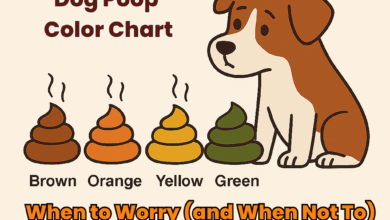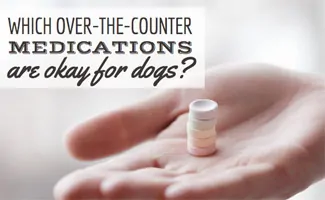Your Dog Ate Your Edible. Now What?
When you purchase through links on our site, we may earn a commission. Here’s how it works.
Imagine coming home after a long day to find your dog disoriented, swaying like a drunken sailor, or hiding in a corner with glassy eyes and trembling paws. Your heart races. Did they eat something toxic? You scan the room—and then it hits you: your stash.
Table of Contents

Cannabis, edibles, a vape cartridge, maybe even a half-smoked joint left on the coffee table. The growing presence of marijuana in homes means more pets are being accidentally exposed, and the consequences can be alarming.
Understanding what cannabis is, how it affects dogs, and what you should do in an emergency isn’t just helpful—it could save your pup’s life.
Unpacking Cannabis: What’s The Difference Between Marijuana & CBD?
These terms are often used interchangeably but aren’t the same. Let’s break it down:
- Cannabis is the umbrella term for all products derived from the Cannabis sativa plant. This includes both marijuana and hemp.
- Marijuana refers specifically to cannabis varieties with high levels of THC (tetrahydrocannabinol), the compound responsible for the psychoactive “high.”
- CBD (Cannabidiol) is a non-psychoactive compound found in both marijuana and hemp. It does not produce a high and is being studied for potential health benefits, including in veterinary medicine.
Why does this matter? Because THC is toxic to dogs, while CBD may have therapeutic uses when adequately formulated and dosed. The key is understanding the source and concentration.
THC vs CBD In Dogs: What The Science Says
Dogs have a higher density of cannabinoid receptors in their central nervous system compared to humans, making them especially sensitive to THC. Even small amounts can trigger symptoms like disorientation, tremors, and in some cases, seizures. So, dogs and marijuana don’t mix.
There’s a clear distinction between the risks associated with THC and the emerging potential of CBD. While THC can be dangerous—even at low doses—CBD appears to offer therapeutic effects when used responsibly. Understanding this contrast is crucial for pet owners who may be exploring cannabis-derived products for their dog’s health.
A 2024 case series published in Frontiers in Veterinary Science documented six instances of THC toxicosis in dogs. Five of the six dogs showed improvement within 45 minutes after receiving a CBD-infused dissolving sheet—suggesting a potential role for CBD in mitigating THC’s effects.
When it comes to seizures, research from Colorado State University found that 89% of dogs treated with CBD experienced a reduction in seizure frequency, reinforcing CBD’s promise in managing canine epilepsy.
Safety matters, too. A 2023 study in Frontiers in Veterinary Science assessed various oral doses of CBD in healthy dogs. It concluded that while oral lethal doses remain undetermined, CBD shows low acute toxicity when administered properly.
To learn more about the benefits of CBD oil for dogs and how it interacts with their endocannabinoid system, explore these science-backed insights.
Blunt Truth: The Hidden Dangers Of Marijuana For Dogs
Is weed bad for Dogs? Yes—weed, especially in the form of THC-containing products, is toxic to dogs. Even small amounts can cause serious health issues such as disorientation, vomiting, tremors, incontinence, and, in rare cases, seizures or coma.

The psychoactive compound in marijuana, THC, interacts strongly with dogs’ endocannabinoid systems, which are more sensitive than those of humans. This means even a single edible or a small amount of smoke inhalation can lead to distress or hospitalization.
Many pet owners mistakenly assume that because marijuana is natural or legal, it’s safe around pets. That is dangerously incorrect. While CBD—a non-psychoactive compound—may offer therapeutic benefits when appropriately dosed, THC should be considered a veterinary emergency when ingested or inhaled by dogs.
How Dogs Get Exposed To Marijuana
Cannabis isn’t just dangerous when smoked or vaped. Dogs are scavengers, and exposure can happen in more ways than you think:
- Edibles: Gummies, brownies, cookies, chocolates—they’re tasty, aromatic, and dangerously accessible to dogs. The combination of THC and ingredients like chocolate or xylitol amplifies the risk.
- Loose plant material: Dogs might chew on buds, shake, or trim left lying around. Even small amounts can trigger severe symptoms.
- Secondhand smoke: Inhaling THC smoke can affect your dog, especially in small breeds or poorly ventilated spaces.
- Vape cartridges and oils: These often contain concentrated THC or synthetic cannabinoids. A few licks can cause significant toxicity.
- Discarded roaches or packaging: A joint stub on the sidewalk or an empty edible wrapper in the trash is enough to cause harm.
Size Matters: Why Small Dogs Face Greater Marijuana Dangers
Because THC is absorbed through fat and affects the central nervous system, smaller dogs are more vulnerable to toxicity, even at low doses. For example:
- A single edible containing 10mg THC could severely intoxicate a 6-pound Chihuahua.
- That same edible might produce only mild symptoms in a 70-pound Labrador.
Metabolism, fat content, and age affect how quickly and severely a dog reacts. Puppies, senior dogs, and toy breeds are at much higher risk for seizures, respiratory depression, and prolonged recovery times.
Prevention Tips
- Store cannabis products in pet-proof containers and out of reach.
- Clean up smoke sessions and discard waste securely.
- Don’t let guests or roommates leave products unattended.
- Educate everyone in your household, including kids and visitors.
Spotting The Signs: How Marijuana Affects Your Dog
THC interacts with the endocannabinoid system in both humans and dogs, but dogs have more cannabinoid receptors in their brains. That makes them especially sensitive. Symptoms usually appear within 30 to 90 minutes after ingestion and can last from hours to days, depending on the dose.

Common Signs
- Ataxia: Lack of coordination or unsteady walking is a hallmark sign.
- Dilated pupils or glassy eyes: Often combined with a dazed expression.
- Hyperreactivity to sound or touch: Dogs may become easily startled or anxious.
- Lethargy or unresponsiveness: Your dog may appear dazed, slow to react, or excessively sleepy
- Urinary incontinence: Many dogs lose control of their bladder.
- Slow heart rate (bradycardia) or low body temperature (hypothermia): Dangerous when combined with sedation.
- Tremors or shaking: In severe cases, seizures can occur.
Less Common But Serious Signs
- Vomiting or drooling
- Seizures
- Coma
These symptoms can overlap with other toxins, so always disclose possible marijuana exposure to your vet.
Emergency Response: Treating Canine Marijuana Intoxication
Discovering that your dog may have ingested marijuana can be frightening, especially when symptoms start to appear quickly. It’s essential to act fast but stay calm—panicking helps no one, least of all your pet.
Knowing what steps to take in those first few moments can significantly affect the outcome. Below is a rapid-response checklist, followed by more detailed instructions.
Quick Emergency Checklist: What To Do In 60 Seconds
- Secure the source: Remove any remaining edibles, joints, or oils.
- Assess your dog: Are they responsive? Breathing normally? Walking?
- Call for help: Contact your vet or the ASPCA Poison Control (888-426-4435).
- Don’t induce vomiting unless directed by a professional.
Don’t panic. Dogs rarely die from cannabis ingestion alone, but they can suffer immensely without proper care.
Immediate Steps
- Remove access to the substance. Secure any remaining edibles, vapes, or plants.
- Call your vet and be honest. Veterinarians aren’t there to judge—they’re there to help. Knowing precisely what your dog ingested makes a huge difference.
- Don’t induce vomiting unless your vet tells you to. Some cannabis products can cause aspiration pneumonia if vomited.
- Keep your dog calm and warm. Reduce noise and stimulation. Offer water if they’re alert enough to drink.
When To Go To The ER
- If your dog is unconscious or having seizures
- If their breathing becomes labored or shallow
- If they ingested synthetic cannabinoids (e.g., K2 or Spice), which can be far more dangerous than natural THC
Treatment & Recovery
There’s no antidote for THC poisoning, but with supportive care, most dogs recover fully within 24 to 72 hours. Hospitalization may be necessary if the symptoms are severe.
Veterinary treatments may include:
- IV fluids to flush toxins and maintain hydration
- Activated charcoal (if recently ingested) to reduce absorption
- Anti-nausea medications for dogs that are vomiting
- Monitoring vital signs (heart rate, temperature, respiration)
- Oxygen or seizure control in rare, critical cases
Recovery time depends on:
- Amount and type of cannabis
- Dog’s size, age, and health
- How quickly treatment is started
Visual Guide: Quick Facts On Dogs & Marijuana (Infographic)
Learn more about marijuana and dogs in our infographic:

Legal & Ethical Implications
Many pet owners fear legal repercussions for admitting cannabis ingestion. It’s important to know:
- Veterinarians are bound by confidentiality and are focused on animal welfare.
- In some states, failure to seek timely treatment for your pet can result in animal cruelty charges.
What About CBD? Is It Safe for Dogs?
CBD is everywhere, including in treats and oils marketed to pet owners. Early studies and anecdotal evidence suggest it may help with pain, anxiety, and seizures—but it’s not risk-free.
Things to Keep in Mind
- Not all CBD is created equal. Products should be third-party tested and clearly labeled.
- Avoid THC-containing products. Even trace amounts can be toxic.
- Dosage is critical. Work with your vet to determine safe usage.
- Watch for side effects: Sedation, GI upset, or interactions with other medications.
Emerging Research
Recent research continues to deepen our understanding of both the dangers and potential benefits of cannabis-related products in dogs:
- A study published in the Journal of the American Veterinary Medical Association (AVMA) reviewed 223 cases of marijuana toxicosis in dogs. The most frequently reported symptoms included ataxia (88.3%), hyperesthesia (75.3%), lethargy (62.5%), urinary incontinence (45.7%), and vomiting (26%). While most dogs recovered, some showed signs of hyperthermia and tachycardia. Early treatment was critical for survival.
- According to an article in Today’s Veterinary Practice, while extremely high doses of oral THC weren’t lethal in laboratory settings, there have been real-world cases of fatalities in dogs who consumed cannabis edibles. These cases often involved concurrent ingestion of other toxic ingredients like chocolate or xylitol.
- A review published in Frontiers in Veterinary Science in 2024 evaluated 19 tolerability studies and several clinical trials. The consensus: CBD products are generally well-tolerated in dogs, with low rates of adverse effects. Still, purity and dosage remain key factors.
- In a co-administration study, dogs with osteoarthritis received both CBD and NSAIDs. While some improvement in pain was observed, increases in liver enzymes were also reported, suggesting that vet supervision is essential when combining treatments.
- Research from Cornell University found that over 80% of dogs with osteoarthritis showed reduced pain and increased activity when treated with high-quality CBD oil.
As promising as these results may be, leading organizations like the AVMA continue to urge caution. They stress the importance of veterinarian oversight and the need for ongoing research to define safe, effective protocols for cannabis and CBD use in pets.
A 2023 study published in Animals (MDPI) found that 60% of dog owners reported reduced anxiety-related behavior when administering CBD daily. However, researchers also noted variability in quality and formulation, warning of risks with mislabeled or contaminated products.
Personal Experience: Tiny & The Thunderstorms
We tried the CBD oil for medium dogs (210mg bottle) in exchange for an unbiased review. Our dog, Tiny, suffers from anxiety with loud noises, car rides, vet visits, and other situations. We started out on a very low dose to make sure he didn’t have any side effects and gradually built up to the recommended dosage. Once we got to the ideal dosage, we could tell that it was helping ease our dog’s fears.
We’ve had relentless thunderstorms this summer, and we’ve been giving him the CBD oil about 45 minutes before the storms are supposed to hit. While he’s still wary, he’s not shaking as much and sits with me instead of going to his storm hiding spot. He also seems to tolerate car rides a bit better with the oil. It gives us peace of mind that we can help his anxiety with an all-natural product.
– Sally Jones, Rescue Dog Parent & Canine Journal Writer
Learn more about CBD dosage for dogs and our top picks for best CBD dog treats if you’re considering this option for your pet.
Personal Experience: A Retail Perspective
I work at a health food store that also caters to pets. Over the years, I’ve heard overwhelmingly positive feedback regarding people giving CBD oil to their dogs.
What makes this supplement so unique? CBD supports the endocannabinoid system (ECS), which maintains homeostasis, or balance, in the body. Because of the modulatory role of the ECS, CBD offers potential therapeutic benefits for various body processes, including immune function, cognition, stress response, metabolism, and inflammatory responses. That being said, the two most frequent conditions I see this supplement used for are pain and anxiety.
I’ve heard countless stories of dogs struggling with joint pain getting the pep back in their step after starting CBD. It’s also a popular selection for dogs with anxiety. In particular, it’s an excellent choice for supplementing during times of high stress, such as during Fourth of July fireworks or trips to the vet.
– Tara Maurer, Retail Health Consultant & Canine Journal Writer
Frequently Asked Questions
Do you still have questions? You’re not alone. Here are some of the most common concerns dog parents have when it comes to marijuana exposure, CBD use, and what to do in an emergency. Don’t see yours? Ask us in the comments!
Can Weed Kill A Dog?
In most cases, marijuana alone is unlikely to kill a dog. However, high doses—especially from edibles containing concentrated THC or combined with other toxins like chocolate—can cause life-threatening symptoms such as respiratory depression, seizures, or coma. Small dogs, puppies, and elderly pets are at greater risk. Immediate veterinary care is critical in severe cases.
Can Dogs Get High From Secondhand Smoke?
Yes, they can. Dogs exposed to marijuana smoke—especially in enclosed spaces—may absorb THC through their respiratory system. This can lead to many of the same symptoms as ingestion, including disorientation and lethargy.
How Long Do Symptoms Of Marijuana Toxicity Last In Dogs?
Symptoms can last anywhere from 6 to 72 hours, depending on the dog’s size, the amount consumed, and the type of cannabis product. Mild cases may resolve within a day, but larger doses or edibles often require extended veterinary care.
What Should I Do If My Dog Eats A Weed Edible?
Call your veterinarian or the ASPCA Animal Poison Control Center immediately. Provide details like the type of edible, estimated dosage, and when it was consumed. Do not attempt home remedies without professional advice.
Can CBD Help With My Dog’s Anxiety Or Pain?
Potentially, yes. High-quality, THC-free CBD products have shown promise in treating anxiety, pain, and even seizures in dogs. Always consult with a vet before starting any CBD regimen. Learn more about CBD dosage for dogs and CBD oil benefits.
Is It Illegal To Bring My Dog To A Vet After Cannabis Exposure?
No. Veterinarians are there to help, not to report you. Confidentiality laws bind them, and their priority is the health and safety of your pet.
Next Read: Can CBD Help Your Dog?
Want to dive deeper into CBD’s therapeutic side for pets? Learn how cannabidiol could help your dog manage pain, anxiety, seizures, and more—with real science and expert advice to guide you. Read our comprehensive CBD oil for dogs guide.
Why Trust Canine Journal?
Kimberly has written about various dog-related topics, such as pet insurance, health conditions, treats, training, and more. She works with a dedicated team to ensure Canine Journal holds its space as a trusted and go-to online resource for all things dog.



